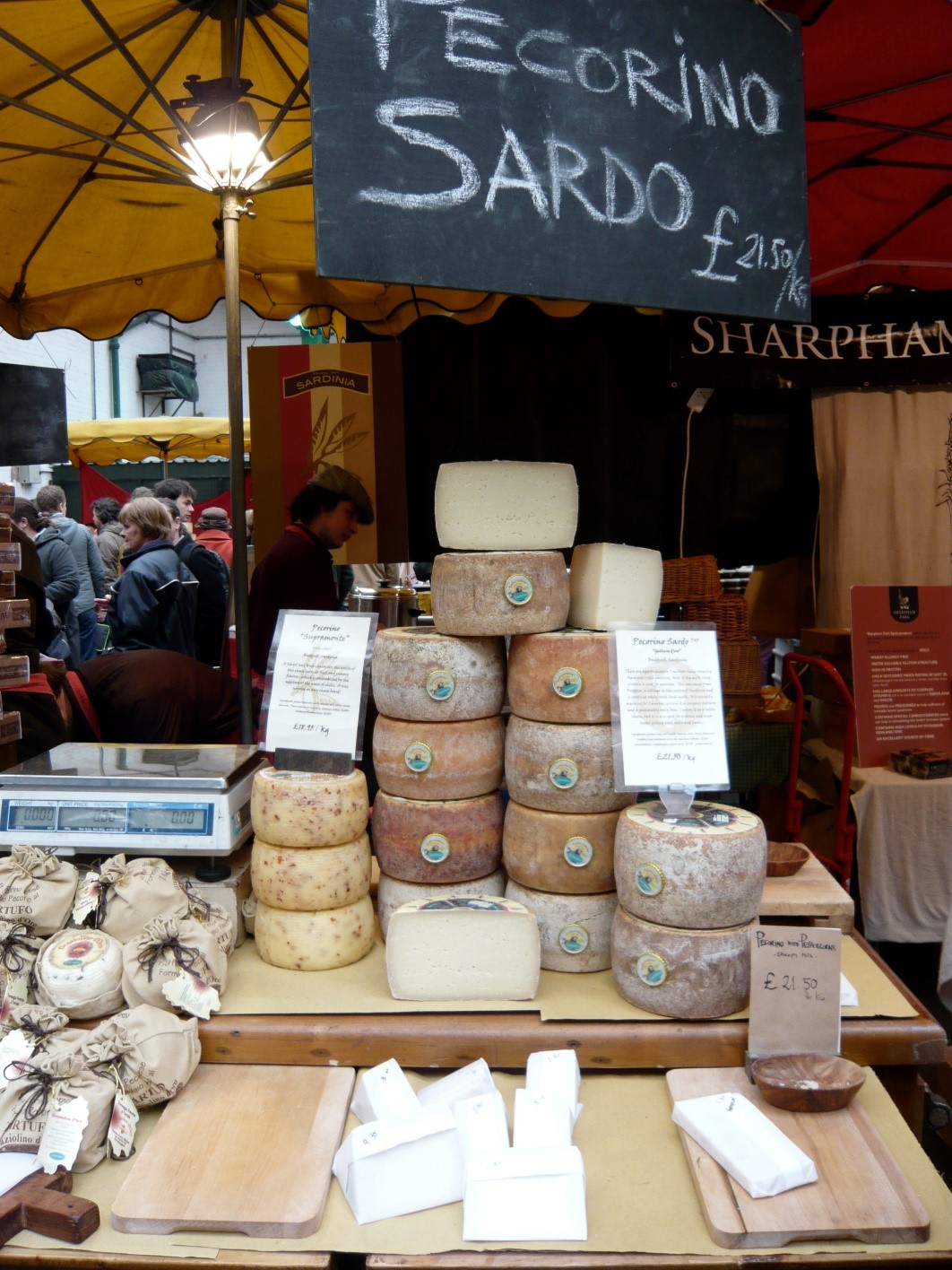Pecorino is a term used for a wide variety of cheese made with sheep’s milk. This is significant since sheep’s milk has twice as many solids: proteins and fat as cow’s milk, meaning the resulting cheese is always rich and intensely flavorful.
Like fine wine, sheep’s cheese like Pecorino reflects its ‘terroir’ or the place where the sheep grazed. And one of the most beautiful landscapes painted by the cheese’s flavors and aroma is the rugged Sardinian countryside.
It comes without saying the European Union law protects Pecorino Sardo as a unique product worthy of its own appellation; what is lesser known is that Pecorino Sardo comes in two presentations, the softer Dolce cheese and the aged Maduro.
For Pecorino Sardo Dolce, producers age the cheese for between twenty and sixty days, resulting in a semi-hard cheese with a pleasant tang. It’s a lovely partner for vibrant white wines like the island’s Vermentino. The Pecorino Sardo Maduro is aged patiently for up to a year! A slice of Maduro is up to the challenge of pairing robust red wine made with Sangiovese.
The Sardinian cheese might not be as well-known as its cousin, the Pecorino Romano. Still, the Sardinian version is known by all for one of the strangest dishes served in the Mediterranean Basin, the Casu martzu, or rotten cheese. This interesting delicacy comes to life when producers allow cheese flies to lay their eggs in the aged cheese. The eggs hatch and cheese maggots transform the hard cheese into a creamy delight reserved only for the brave.
Insects aside, Pecorino Romano is a lovely ingredient vital to the acclaimed Sardinian cuisine. Grate it over pasta, or fill pastries with it; there’s no substitution for such a traditional treat. The Pecorino Sardo is present in every meal enjoyed on the island.

